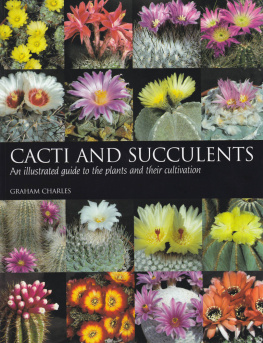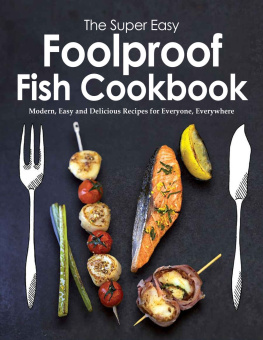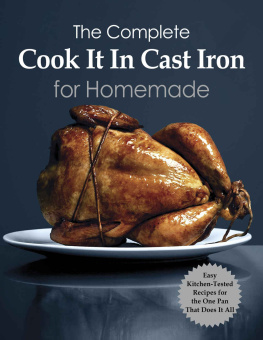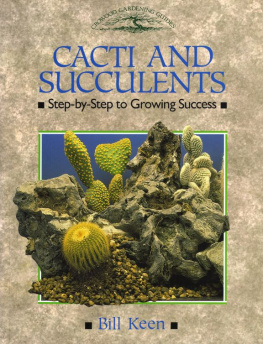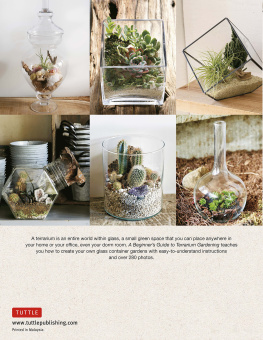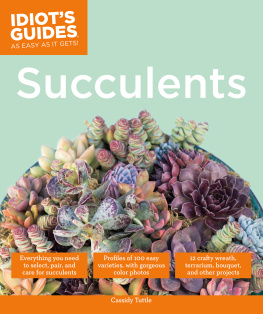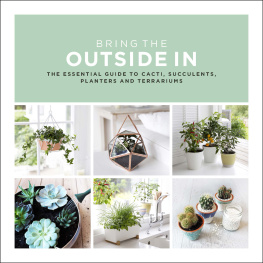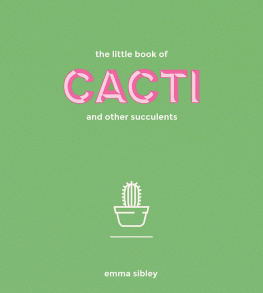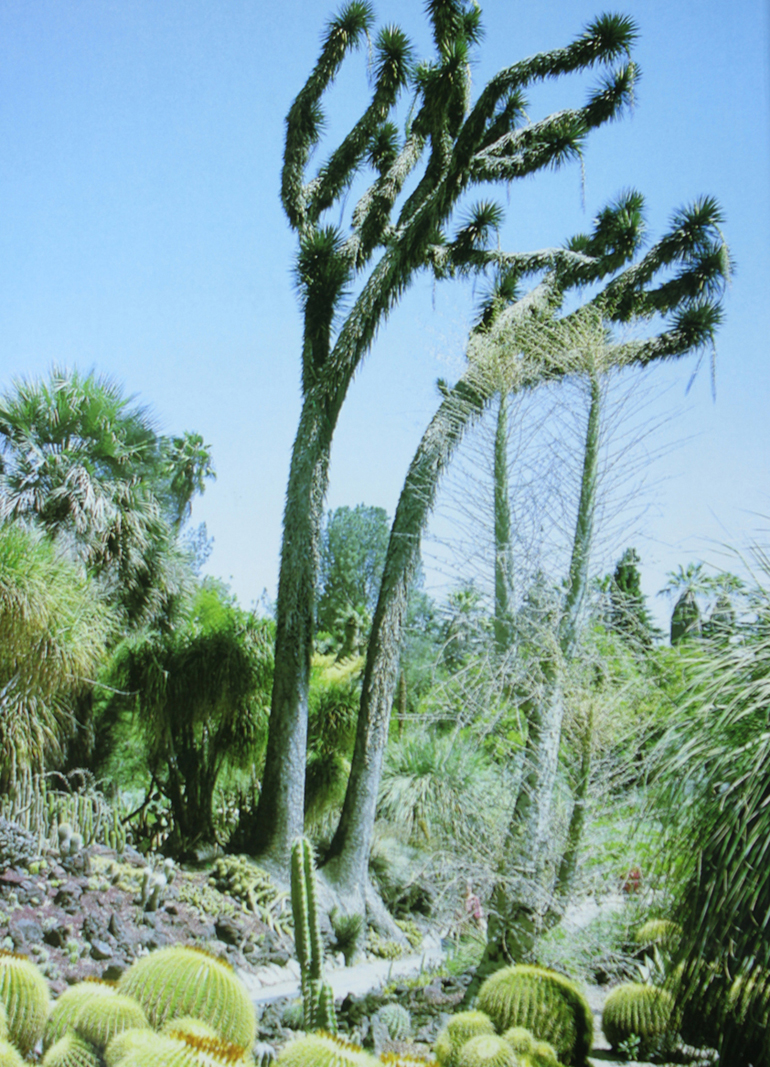Cacti
and
Succulents
Graham Charles

First published in 2003 by
The Crowood Press Ltd
Ramsbury, Marlborough
Wiltshire SN8 2HR
www.crowood.com
This e-book first published in 2014
Paperback edition 2006
This impression 2013
Graham Charles 2003
All rights reserved. No part of this publication may be reproduced or transmitted in any form or by any means, electronic or mechanical, including photocopy, recording, or any information storage and retrieval system, without permission in writing from the publishers.
British Library Cataloguing-in-Publication Data
A catalogue record for this book is available from the British Library.
ISBN 978 1 84797 786 1
Dedication
To my wonderful wife Elisabeth for her love and understanding. I have so enjoyed sharing our interest in plants ever since the moment we met.
Acknowledgements
Sharing with others is a vital part of any activity and so it is with growing cacti and succulents. I am indebted to all the people over the years who have encouraged me and taught me, my companions on the many visits to see the plants in their habitats and the many I have met who have become my friends. I am particularly grateful to everyone who has helped me with this book by allowing me to photograph their plants or by providing pictures. Here I must make special mention of Tom Jenkins, the British Societys Chairman, who introduced me to the project and gave me support, advice and pictures, particularly of other succulents. Also my good friend Chris Pugh, whose companionship, growing skills and commercial nursery are a constant inspiration. Another excellent grower is Bryan Goody, the owner of Southfields nursery, who allowed me to photograph some of his wonderful plants for this book. Then there are my generous friends who loaned me their photographs: Derek Bowdery, Eddie Cheetham, Eddie Harries, Tom Jenkins, John Pilbeam, Albert and Daphne Pritchard, Chris Rogerson and Bill Weightman a big thank you to all of them. Finally, a special thank you to my wife Elisabeth for her support and for proof reading the text.
Photographic Acknowledgements
The names of picture contributors will be found in the captions. All others are by the author.
Frontispiece: Mature plantings of succulents at the Huntingdon Botanical Gardens, California, USA.
Preface
It was just over forty years ago when, as a young boy, some friends of my parents gave me my first cacti. My father was a keen gardener and encouraged me to take an interest in plants. It was not long before my expanding collection took over his greenhouse, ousting his tomato plants. As far as I remember he was philosophical about it and continued to support my interest. We saw an advert for the local branch of what was then the National Cactus and Succulent Society, so he took me to the next meeting and we joined that evening. With the encouragement of the other members my interest grew rapidly and I think it has continued to grow ever since, some would say to obsessive proportions! It is certainly true to say that I have derived great pleasure from the hobby, moving my interest from one plant group to another, one aspect of the hobby to another, meeting kind and genuine people, many of whom have become my friends.
The world is very different for young people today. There are so many exciting things to do that you might think that cultivating something as slow growing as a cactus would not appeal any more, but in fact children still find them fascinating and are a major proportion of the buyers at garden centres. Gardening in general is ever more popular; and conservatories, which are becoming more common than previously, make an ideal environment for many succulents. They fit in with a hectic lifestyle, since they have no objection to being left without water for a while and they dont grow too quickly, so you can spend time with them when it suits you. When I had a demanding career, I used to find the time in the glasshouse a perfect opportunity to relax after all, nothing happens quickly in a succulent collection!
My aim in writing this book is to give any reader an insight into what the hobby is really like today. I have tried to explain what makes it so much fun and how satisfying it can be. There are no long, wordy descriptions of the plants, just the features that make each one special and what you need to know to get the best out of them. The illustrations are more informative than any description ever can be. The Latin plant names may be a bit daunting but people soon get used to them. Unfortunately, botanists tend to change the names, so I have used the latest ones and referred to older ones you may still encounter. The advice and recommendations are based on my own experiences and may not always agree with what was written years ago and copied ever since. If you are new to the hobby, then I hope you will find all you need in these pages to get started. If you already have an interest in cacti and succulents, then there will be further stimulus for you here. I have given references to other books and sources of information to enable you to develop your hobby further.
Good growing!
Graham Charles
Stamford, UK 2003
1 The Unique Nature of Succulents
Evolution and Adaptation
What are succulents and how do they differ from other plants? There is no absolute definition of a succulent, it is a case of degree some plants are extremely succulent and others only slightly. Not everyone agrees and succulent collections often contain plants that are only marginally succulent. It is not just a case of storing water; to be a succulent a plant must have evolved ways to conserve its reserves. Some plants, such as begonias, have stems full of water but they are not succulent since they soon wilt and die in a prolonged drought. Succulence takes a number of forms depending on where the water is stored; for instance, there is leaf succulence where the leaves are enlarged with waterstoring tissues such as is seen in echeveria and mesembryanthemums. These leaves can exhibit modifications to reduce transpirational loss of water such as a covering of hair or a waxy bloom.
Stem succulents have thick stems where the water is stored and this is the strategy of most cacti and euphorbias. Stem succulents such as pachypodiums and some euphorbias have normal leaves that grow when water is available and shed in times of drought. Other succulents store water underground in swollen roots, an effective strategy in extremely arid places. In fact, the big swollen subterranean or surface storage may not be roots at all but an adapted part of the stem, for which the term caudex is often used. By combining different types of succulence a plant can be particularly effective at storing water during periods of prolonged aridity.
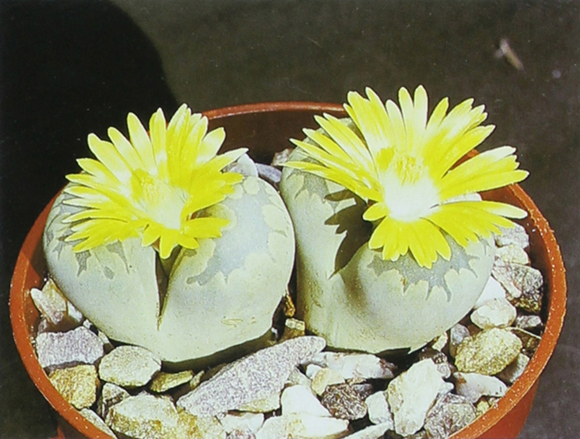
Lithops otzeniana, a leaf succulent that mimics the stones amongst which it lives.
Obvious examples of stem succulents are cacti, euphorbias and stapeliads, which usually have green stems because they have taken over the function of photosynthesis from the leaves, which are often absent or greatly reduced. In some cacti such as epiphyllums and schlumbergeras, the stem has become flattened and looks like a leaf. Where true leaves are present, they are shed at times of drought. The stems are usually ribbed or tuberculate to allow for expansion and contraction without damage as water is absorbed or lost. In cultivation, splitting can still occur due to excess water being given, particularly after a long dry period. Spherical or cylindrical stems are the best shapes to minimize surface area for a given volume.

